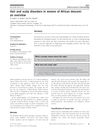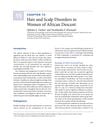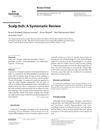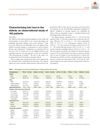Characteristics of Central Cicatricial Centrifugal Alopecia in Elderly vs. Younger Patients
September 2018
in “
Journal of the American Academy of Dermatology
”
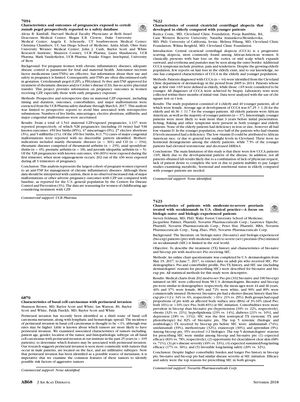
TLDR Elderly patients with CCCA were all African American with low vitamin D, but no iron or zinc deficiencies, and no hormonal imbalances compared to younger patients.
The document reports on a study examining the characteristics of central cicatricial centrifugal alopecia (CCCA) in elderly patients compared to younger patients. CCCA is a type of scarring alopecia most commonly found among African-American women. The study included 44 female patients diagnosed with CCCA at the Cleveland Clinic from 2005 to 2014, with 4 patients being elderly (age ≥65) and 40 being younger (age <65). All diagnoses were confirmed by biopsy. The study found that the average age at development of CCCA was 67.25 for the elderly and 46.36 for the younger patients. All elderly patients were African American, as were the majority of the younger patients. Younger patients tended to wait more than 3 years before seeking medical advice. Symptoms such as itching and flaking were present in both age groups. None of the elderly patients had iron or zinc deficiencies, but all had low vitamin D levels, which could be due to their race or low sunlight levels in Cleveland. No hormonal imbalances were found in the elderly, while 7.5% of the younger patients had elevated testosterone and decreased DHEA-S levels. The study concluded that larger studies are needed to examine metabolic, hormonal, and nutritional status in elderly compared with younger patients with CCCA. The study's main limitation was the small number of elderly patients, which could be due to the disease's developmental pattern. Not all patients had lab results, possibly due to various reasons including lack of physician request, patient desire, or inability to pay.


